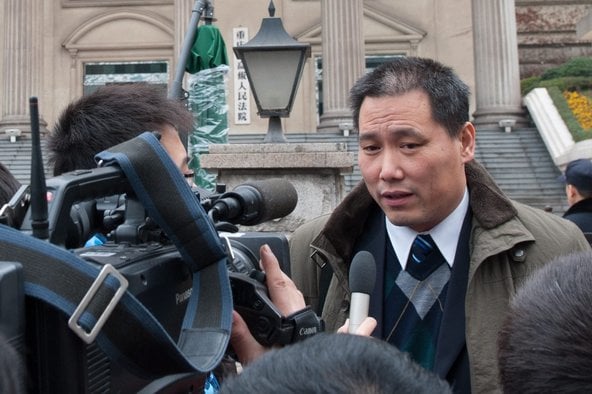Art & Exhibitions
Ai Weiwei’s Lawyer Detained by Chinese Government


Sarah Cascone

The movement to free dissident Chinese artist Ai Weiwei, deprived of his passport since 2011, received a significant setback with the detention of his lawyer, Pu Zhiqiang. The crusading human rights activist was detained over a month ago for attending a meeting in Beijing marking the anniversary of the Tiananmen Square protests of 1989, reports Sinophere for the New York Times.
According to the public security bureau in Beijing, Pu was arrested on charges of “creating a disturbance” and “illegally obtaining personal information.” His supporters suspect the detention is an attempt to silence the outspoken lawyer, who has worked on a number of sensitive civic rights issues. Pu’s niece, Qu Zhenhong, also a lawyer, has also been incarcerated.
Pu’s arrest is part of a larger ongoing crackdown on the part of the Chinese government. “The current suppression of rights lawyers is worse than in the 2011 ‘Jasmine’ period” Pu’s friend and colleague Teng Biao told the Guardian, referring to a period marked by a large number of detentions of activists who had posted on the Internet calling for protest. “It is the most serious since 1989.”
With more than a month gone by since Pu’s initial detention, it seems likely that the government will move to arrest him formally. The 49-year-old lawyer suffers from diabetes and is thought to be in deteriorating health.
The organization Friends of Ai Weiwei has been doing their best to put pressure on the Chinese government to stop restricting Ai’s movements, launching a Shepard Fairey-led poster campaign earlier this spring. That the man who represented Ai during his 2011 arrest is now being detained himself does not bode well for the future success of their efforts.
Despite being confined to China’s borders, the artist has continued to show his work abroad. Ai’s latest piece, according to Complex, will be hidden underground work at the sixth edition of the Brodno Sculpture Park project in Warsaw. To Be Found, which debuts July 13, comprises a series of three ditches piled with ceramic shards (the shattered remains of replicas of a vase Ai found in a 14th-century temple), then filled in with earth. The functionally invisible project “is supposed ‘to be found’ by future generations or aliens, or whoever will come after us,” curator Sebastian Cichocki told the Art Newspaper.